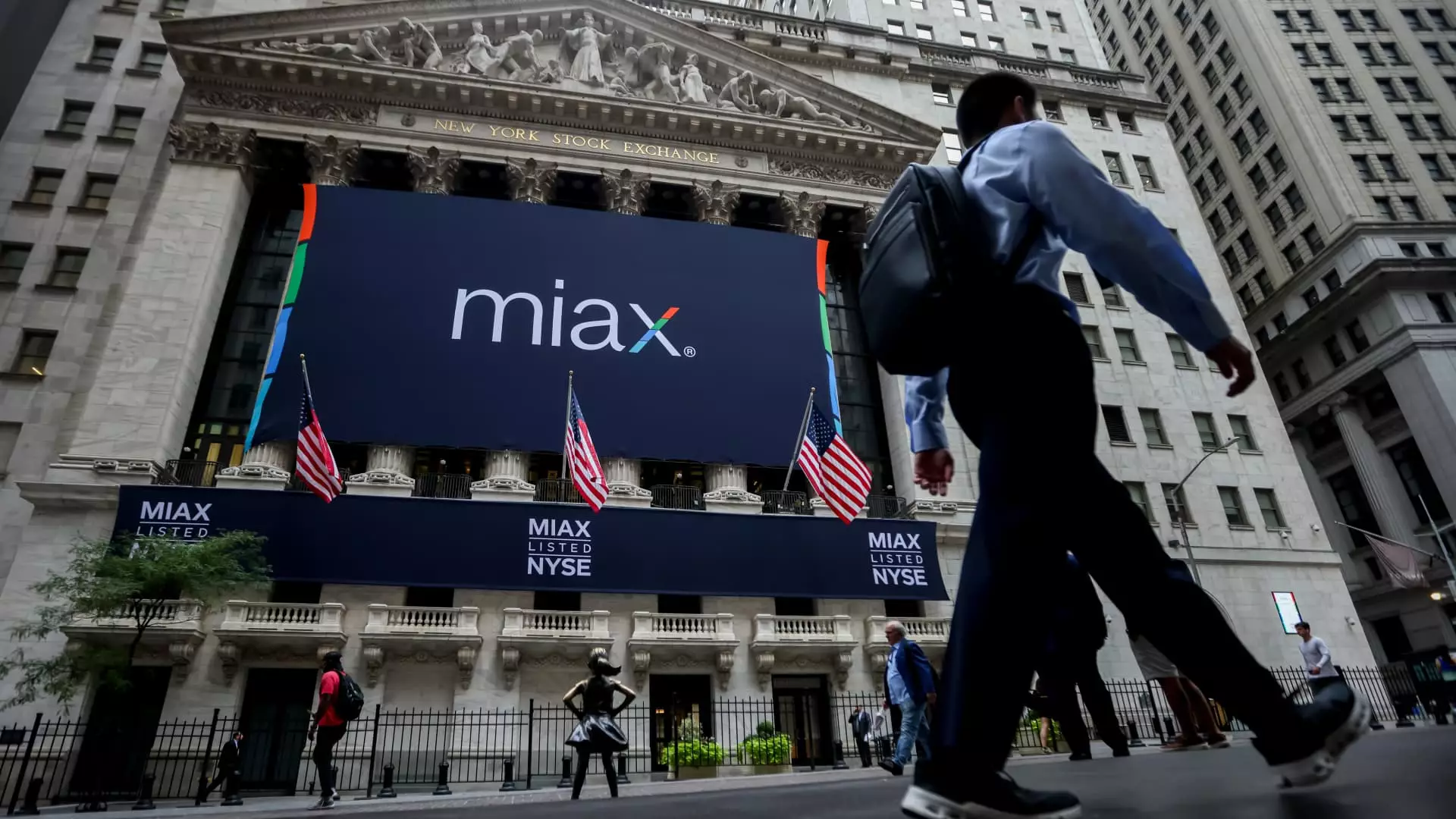In an era where economic uncertainties threaten to dampen investor confidence, Miami International Holdings’ debut into the NYSE stands out as a beacon of resilience. Surging over 43% upon listing, this move sends a message: despite regional and geopolitical tensions, financial markets remain adaptable and eager for growth opportunities. The company’s impressive initial performance underscores a broader trend of non-traditional financial entities gaining prominence, challenging old paradigms that once limited market innovation to a few entrenched institutions. Yet, one must question whether such meteoric rises are sustainable or merely a reflection of speculative enthusiasm. The fact remains, this debut signals a shift—markets are increasingly valuing agility and forward-thinking leadership over traditional stability. This momentum, if maintained, could herald more disruptive forces entering the financial sector, potentially shaking the foundations of longstanding power structures.
Media Giants Struggling Amid Turbulence
Contrasting bullish market movements, Paramount Skydance’s recent slide of over 6% reveals the fragility within the once-buoyant media industry. Despite a record 37% surge just a day earlier, the subsequent decline exemplifies the volatility that now dominates media valuations. It’s a sobering reminder that even companies that enjoy momentary investor hype cannot escape the slower, more challenging realities of content saturation, competitive pressure, and shifting consumer preferences. These oscillations highlight a broader truth: media companies, long considered safe investments, are increasingly vulnerable to rapid shifts. Investors are questioning whether the golden days of media conglomerates are truly behind us or if resilient niches still exist amidst chaos. Overall, such movements warn us that growth in this sector is increasingly precarious, and only those with genuine innovation and adaptability will survive.
Manufacturing and Tech: Indicators of Structural Adjustment
Traditional manufacturing and high-tech sectors are displaying contrasting signals. Amcor’s 14% decline after missing earnings forecasts is a textbook example of the market’s harsh stance on short-term performance. With revenue and profit margins falling short of analyst expectations, the firm’s struggles exemplify how even established players are feeling the heat of economic headwinds and possibly overleveraged supply chains. Meanwhile, tech equipment maker SiTime’s modest 1% rise indicates cautious optimism grounded in strategic positioning within the MEMS market. UBS’s bullish outlook, driven by high-profile design wins, reflects an acknowledgment that innovation can still propel growth. The divergence between these companies underscores a vital insight: the manufacturing and tech sectors are in a period of rocky adjustment. Only those with clear strategic advantages and robust market positioning will thrive, while others risk irrelevance or sudden downturns.
Consumer and Auto Retail: Warning Signs of Broader Economic Tightening
The retail sector, exemplified by Advance Auto Parts’ 9% plunge after lowering its 2025 outlook, reveals a sobering reality—consumer spending may be waning faster than expected. The company’s cautious stance on tariffs and earnings hints at an increasingly challenging environment for the auto industry, a traditionally resilient sector. Similarly, Li Auto’s 5% decline following a downgrade by JPMorgan illustrates how even the burgeoning Chinese EV market cannot escape fierce competition and margin pressures. These signals suggest a macroeconomic reality where consumer confidence and corporate profitability are under strain. If auto and retail giants continue to falter, it could foreshadow a broader slowdown, forcing investors to reconsider the sustainability of previous growth assumptions.
Declines in Traditional Industries and the Rise of Volatility
Deere’s 6% slip after trimming its outlook, and Tapestry’s 15% drop due to missed earnings estimates, exemplify the fragility of sectors once thought resilient. The agricultural equipment giant’s cautious outlook and luxury retailer’s soft guidance reveal an industry navigating through heightened economic noise. Meanwhile, Ibotta and Coherent’s sharp declines—32% and 24%, respectively—highlight the heightened volatility that now pervades the tech and semiconductor domains. These crashes, despite being sector-specific, portend larger underlying issues: squeezed margins, increasing competition, and the reluctance of consumers to spend freely. As market participants grow more jittery, volatility becomes a defining characteristic, challenging the complacency that once characterized steady sectors. Only firms with solid fundamentals and adaptable strategies will navigate this turbulent terrain.
The Crypto and Defense Sectors: Moments of True Contradiction
While traditional sectors falter, crypto and defense stocks reinforce the unpredictable nature of modern markets. Bullish movements in crypto exchanges like Bullish and Kratos Defense reflect a paradox: confidence in blockchain and military spending remains strong amid broader market doubts. The 83% surge on debut day for Bullish signals investor appetite for disruptive assets, yet doubts linger about long-term viability. Conversely, Kratos’ steady gains suggest a more strategic confidence in defense spending driven by geopolitical shifts. These sectors embody a deeper ideological divide—traditional industries are cautious, while emerging and strategic sectors thrive on volatility, innovation, and perceived necessity. Their behavior underscores a fundamental truth: the market is reshaped by both macroeconomic shifts and underlying technological or geopolitical tensions, demanding a nuanced and skeptical perspective from investors who refuse to chase every shiny object.

